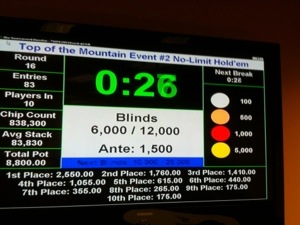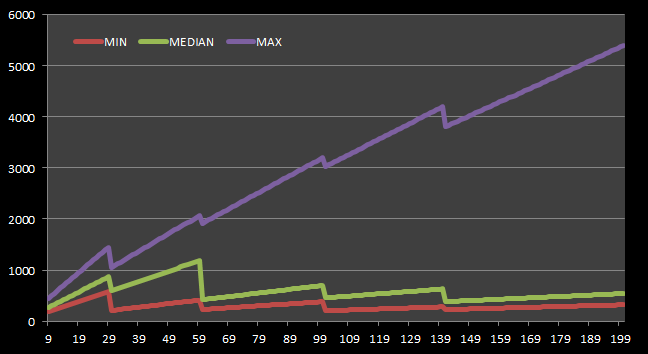I’ve been kind of busy lately and haven’t been playing quite as frequently over the past couple of months, but it’s the beginning of the WSOP again and while I don’t have a two-week trip of shame planned this year, I will be in Las Vegas on Wednesday this week, for a quick overnight trip to play (hopefully) an event at the Venetian (as opposed to an event at the Venetian and then three or four other bust-outs before I head home Thursday night).
I’ve played 90 tournaments this year with four or more tables, and my ITM in those games is 18%. I hadn’t had a big win for a while, but back in mid-March, I cashed well in the Aces Players Club $25K, then I was in a multi-way chop for the one of the Spirit Mountain Top of the Mountain Events in May. Despite the fact that they were exactly two months apart, I only played two other $100+ buy-in events between them because of schedule issues (like I said, I’ve been busy). The field sizes were 92 at Aces and 83 at Spirit Mountain; I feel like making the final table for two of four in that period wasn’t bad (although I’ve played three since Spirit Mountain without a cash).
Vegas is already over 100 degrees, it’s not supposed to get below 80 Wednesday night. I’ll be staying at The Quad for the first time since the renovation as will my poker guru.
I’m flying in at 9am and I’ll hustle over to The Venetian, most likely to play in a Limit Omaha Hi tournament. Opinions on that from fellow players here in Portland are decidedly mixed, with a few people shuddering at the thought of limits and no lows and others expressing some interest to hear how it goes. I went on the Pokerstars mobile app this evening and ran 500 play betting units up to over 2,500 in short order by continually getting the nuts. I think that will be my strategy for the tournament.
That’s a two-day tournament, so hopefully it will be the only one I’m playing on this trip. There should be around 120 players, if the other similarly-priced Limit Omaha8 and Stud8 events can be counted on as a guide. Depending on if and when I bust out of that game, I’ve got a list of other games at venues around town to choose from, though the big ones are the WSOP Deepstack $235 at 3pm (today’s game had 1,235 players with $45,800 up top; according to a shot of the tournament clock, by level 7 the average stack is 30BB with 60% of the field left). The Venetian has a Survivor tournament at 4pm with a great ROI if you make the money because the entire top 10% of the field chops for a profit of more than 700%. After 6 are choices of the smaller WSOP Deepstacks at 6pm and 10pm and the last Venetian game at 7pm.
If I’m not playing the second day of the Venetian tournament on Thursday, most likely my only option will be the $70 daily event at Caesars at 9am. I don’t think anything else can be counted to be over in time to get to my 10pm flight.
Gonna touch the live wire again and see if I have a better experience than last time. See you inside where it’s air conditioned.


